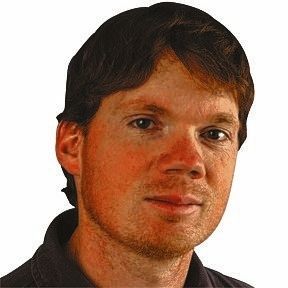Click here to subscribe today or Login.
When I saw the photo of a bison calf standing in the back of an SUV last week, I knew the story wasn’t going to end well.
Earlier this month a tourist at Yellowstone National Park found a bison calf, a fairly common sight around the park this time of year.
But this tourist, according to reports, thought the calf looked cold, so he loaded it into the back of his SUV – with the backseats down to give it more room, then drove to a ranger station.
Park rangers tried in vain for two days to reunite the calf with its herd, but it was too late. Human interference had already sealed the calf’s demise.
Because the calf was rejected by the herd, and the fact that it seemed imprinted on humans and cars and repeatedly wandered onto the road, the animal was euthanized.
The incident is a clear example why it’s not a good idea to pick up newborn wildlife, regardless if there are good intentions behind the action.
It’s also a sad reflection of just how disconnected society in general has become with the natural world.
A general rule with newborn wildlife – particularly fawns, is to never pick them up. Even if animal appears abandoned because there isn’t an adult within sight, most of the time that isn’t the case. Anybody with even a partial understanding of the natural world knows this.
The tourist at Yellowstone apparently didn’t.
And such occurrences aren’t limited to bison calves at Yellowstone, unfortunately.
Similar incidents happen right here every year. I spoke with wildlife rehabilitator Susan Gallagher last week and asked her if things are busy at the Carbon County Environmental Center, where she works.
It’s extremely busy, she said, as it is every year around this time. The phone is ringing off the hook with calls about “abandoned” fawns and baby robins that fell out of a nest and are in urgent need of help.
The staff at the center is patient with every call, taking the time to explain that the animal likely isn’t in distress and the situation is entirely normal.
Still, no matter how much outreach Gallagher and her co-workers due to educate the public about newborn wildlife, the incidents keep occurring.
“People will find something and tell us it’s cold and they want to warm it up,” Gallagher said. “We’ve had people come into the center cradling fawns they said were abandoned. Usually when we tell them that’s not the case, educate them, they leave and put it back.”
It’s a shame that society today needs to be educated on how nature works. Newborn wildlife is rarely abandoned. They don’t need to be warmed up. Most of the time what appears like signs of distress to us are a means of survival for a wild animal.
“People want to assign human values to wildlife,” Gallagher said. “Their hearts are in the right place.”
But their reasoning isn’t.
That’s not to say there aren’t instances when nature does need a little help from man.
Gallagher said the center has taken in quite a few young songbirds this spring whose nests were blown out of trees or destroyed. The story today about the American bittern that Gallagher rehabilitated after it was found with a broken wing is a good example of man helping nature.
I’ve heard stories from other wildlife rehabilitators who took in fawns that were truly abandoned after the adult female was killed by a vehicle.
In those cases, human intervention can help.
But a bison calf loaded into the back of an SUV because it looked cold?
The only thing cold with that situation is the ignorance that ultimately led to the calf’s demise.





